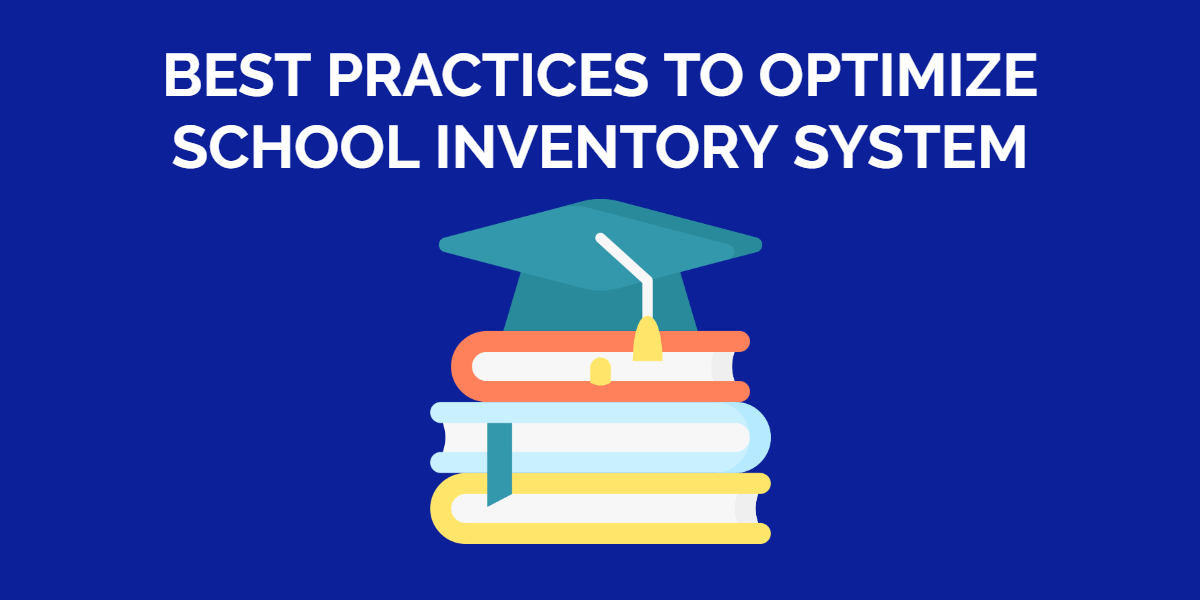School systems deal with a large volume of equipment and supplies. These include IT equipment, classroom furniture, text books, school supplies and much more. With such a diverse range of items to manage, it is important to devise a standardized school inventory system to stay organized and cost effective.
A well defined school inventory system enables efficiency while driving down cost. Here are a few specific ways school systems can benefit:
Multi campus inventory management: A single actionable inventory system designed for school assets can be easily implemented across various campuses. Having a uniform data collection process enables a systematic management strategy with minimal room for error.
Reduced asset loss and theft: Without a systematic inventory mechanism in place, educational institutions are likely to suffer from asset loss through theft and misplacement. Faced with tight budgets, school systems cannot afford to lose out on expensive items, especially IT devices. When there is an updated record of every item in the inventory, it becomes easier to track ownership.
Record transparency: Schools often receive funding from public and private donors to be used for multiple projects including procurement of school equipment. In such cases schools have to keep a transparent record of all equipment purchased via funding. An organized inventory system helps schools maintain accurate up-to-date records which can be easily shared with donors. .
A reliable school inventory management system ensures that all required equipment and supplies are readily available to teachers, students, and staff for minimal disruptions to the learning process.
Ready to implement? Here are 5 best practices to help you get started:
1. Classify inventory into categories
The first step is to lay down the basic principles for organizing your inventory system. Since educational institutions have multiple types of assets that need to be accounted for, an efficient solution is to divide them into categories.
For example, the broader categories could include classroom furniture, library resources, technology equipment, office supplies and more. These groups can then be further broken down, for example, technology equipment comprises laptops, desktops, and smart boards etc.
Once this classification is complete, the next step is to assign serial numbers to individual items for accurate record keeping. Having unique identification numbers for items makes it easier to store and access information.
An organized inventory system enables teachers, students, and administrative staff to quickly find the assets they are looking for. Fast retrieval saves time and effort spent in trying to locate items with no identification records.

Read more: 4 Main Types of Education Assets and How to Manage Them
2. Do regular inventory counts
Without a balanced inventory, schools are likely to suffer from unexpected stock wastage. You may end up having too much of a particular item and too little of another item. To tackle such problems it is essential to do regular inventory counts. Doing so helps to establish reorder cycles that ensure you are never over or under stocked.
Before getting started, here are some simple steps to follow. Organize items and ensure everything is labeled with a unique serial number. After this, assign staff to this project and brief them about stock counting rules, whether they are using manual methods of counting or a software to scan equipment.
Fix a date and inform all campuses within the system about the inventory count. Pause any new inventory coming at this point so that results are not disrupted. Revise counts and report the results. Regular inventory counts facilitate timely reorder cycles based on demand to ensure that there are no last minute emergencies.

3. Track purchase order receipts
Schools must maintain an accurate record of all purchase order receipts and vendor details. Based on consumption, every school has to deprovision their inventory at some point and acquire replacements. If order receipts and vendor details are already available in the system, you can easily reorder replacements for this decommissioned equipment.
Instead of relying on memory or guesswork, a school inventory system should have a proper mechanism to account for procurement receipts and vendors. Doing so ensures that all inventory items are constantly updated in regards to their warranty renewals, purchase and disposal dates. Having an accurate database of all purchase orders also helps schools prepare financial reports and budgets for the next educational year.
4. Conduct annual audits
Annual inventory audits are a major part of the school inventory process as they help to determine exactly what assets are in store, how they are being used, and the state of their condition. Without an accurate inventory, it becomes harder to keep track of assets and ultimately carry out an audit.
Organizing regular audits enables schools to rectify fraudulent activities and control cost through lower probability of misplaced assets. An accurate inventory record makes it easier to compare audit numbers for the past years and ensure any differences are accounted for. Other than this, an audit also maintains a trail of financial statements that are useful when applying for sponsorships and funds.
Read more: How Asset Labels for Schools Help Streamline Education

5. Generate reports to track KPIs
An important part of deriving the best possible return from a management strategy is to define key performance indicators (KPIs). In the case of a school inventory management, some common indicators include demand forecast accuracy, order cycle time and put away time. Depending on the greater learning goals, schools can lay down inventory targets they want to achieve.
Once you have finalized your KPIs, the next step is to track them. A practical way to do so is to run inventory reports with all the major performance indicators. These reports can then be analyzed to generate in depth insights about inventory levels and its management. Inventory reports let you know whether a certain item is worth the investment or whether you need to re-evaluate your procurement decisions.
About EZOfficeInventory
EZOfficeInventory is a leading asset tracking software. It allows you to track, maintain, and report on inventory from anywhere, at any time. We offer a free 15-day trial – no credit card required!







